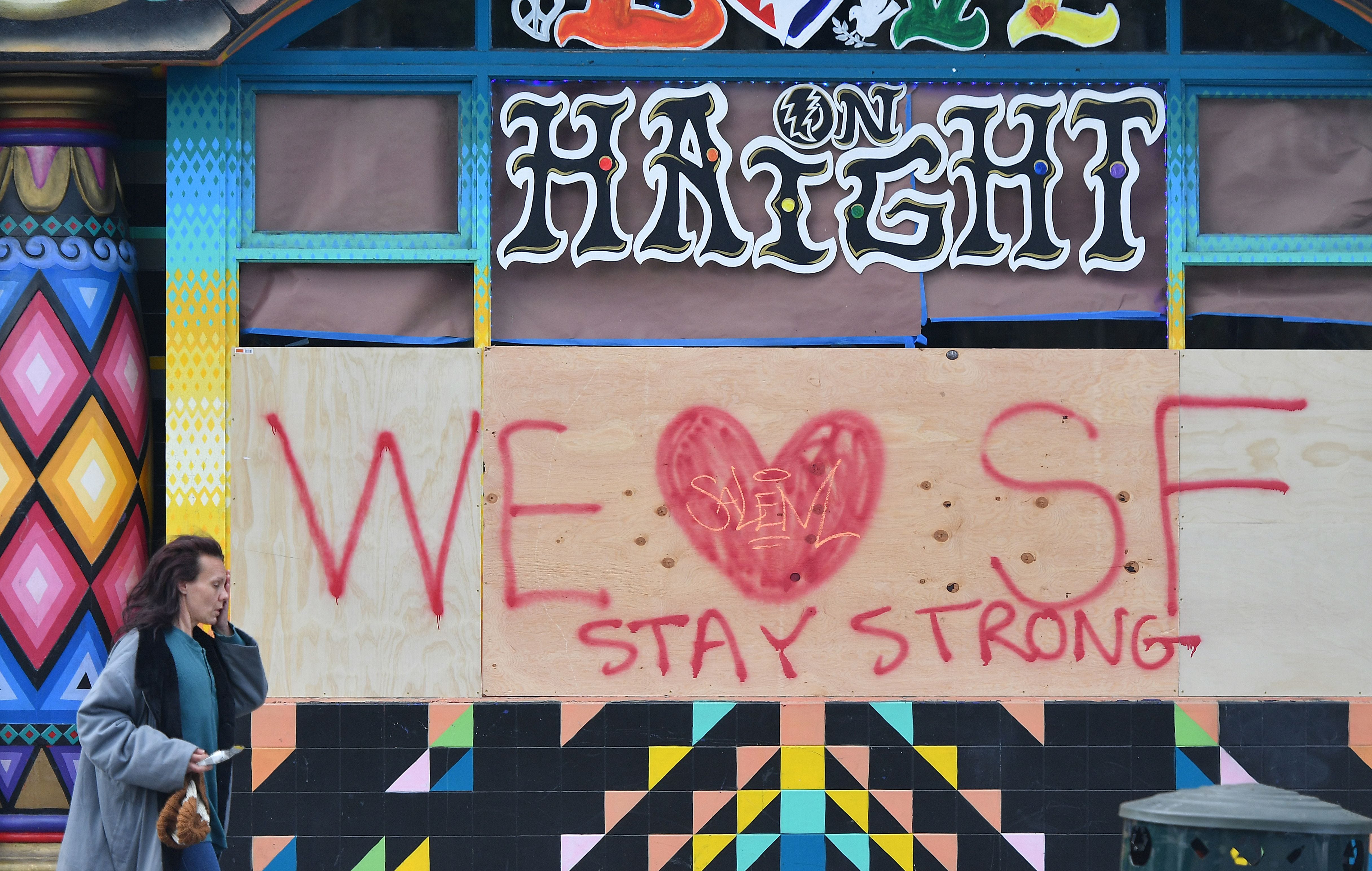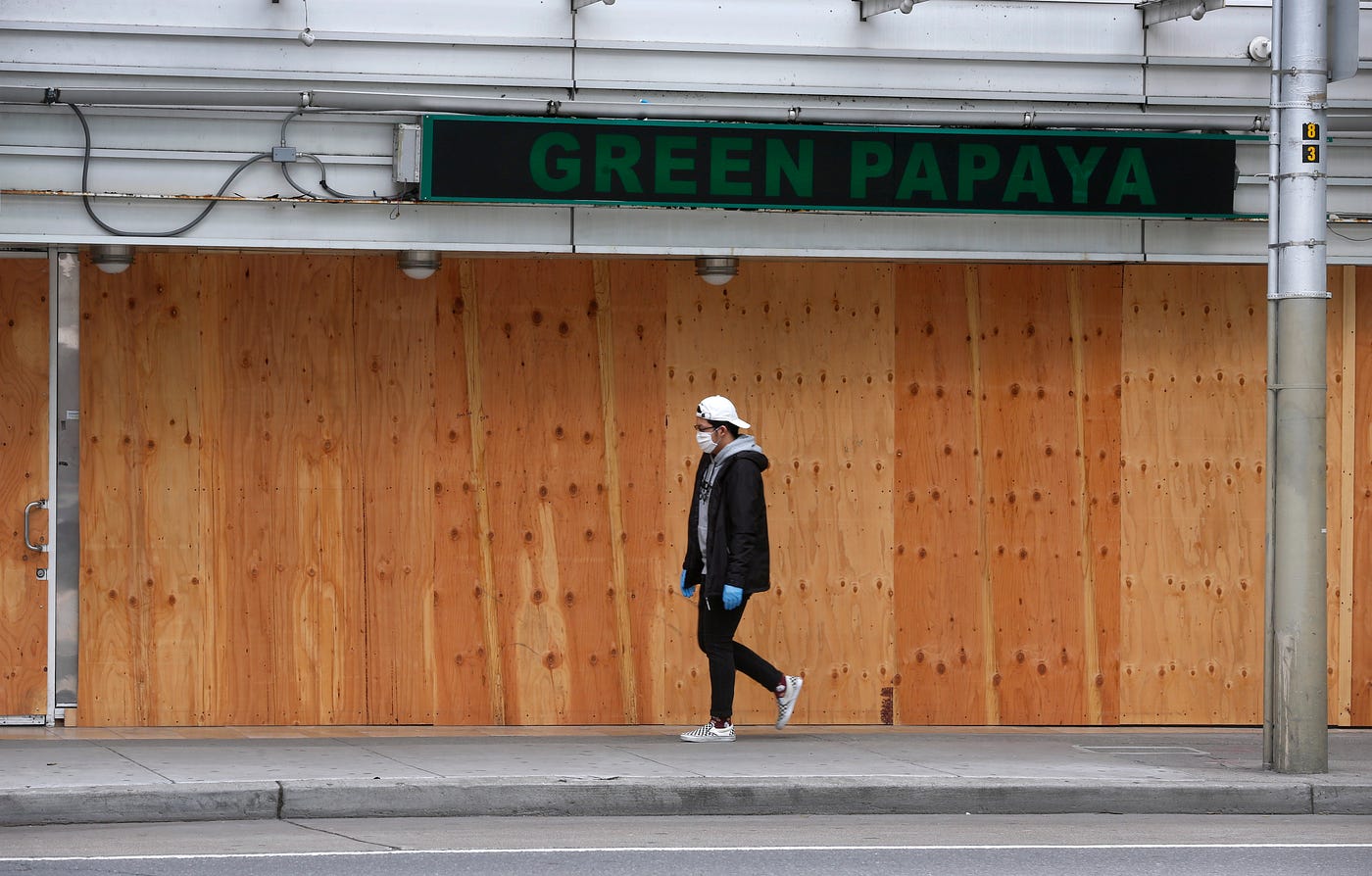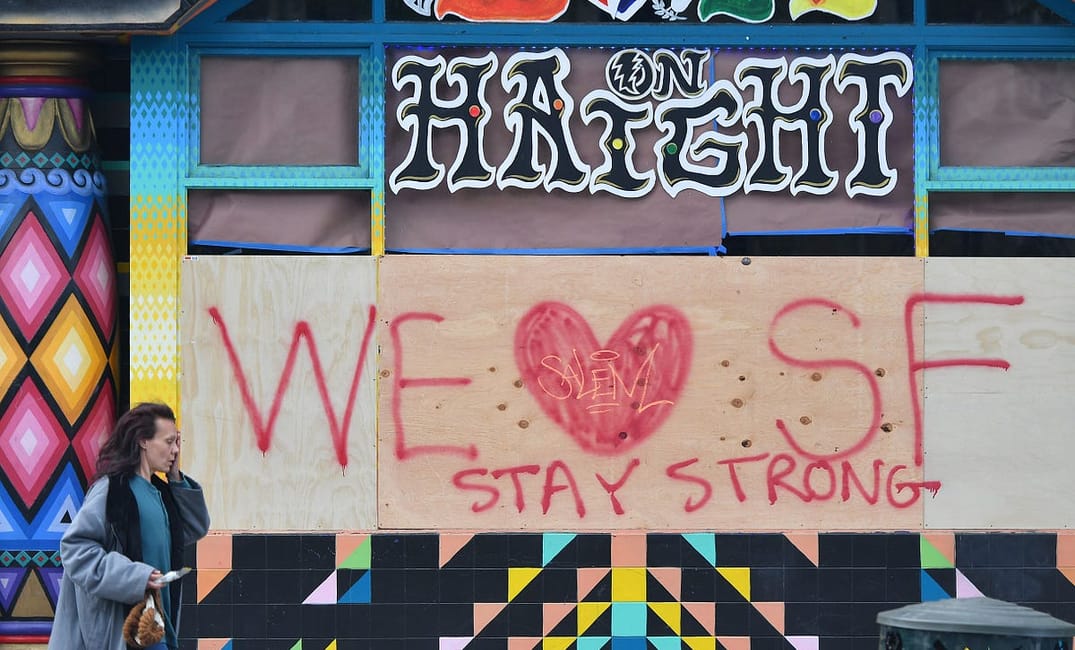
San Francisco is coming back to life. Nothing is quite normal, but there is some semblance of normalcy. Businesses are opening up. People are eating at restaurants outside. Once boarded-up retailers are shedding the armor and welcoming back masked patrons. Stock markets and tech companies are bullish again. People are generally more hopeful.
But what we’re feeling is a false sense of security. Trouble is still brewing.
Sign up for The Bold Italic newsletter to get the best of the Bay Area in your inbox every week.
As a licensed commercial real estate agent who grew up in the Bay Area and has called San Francisco home for the past decade or so, I’ve been watching in shock at the unprecedented impact the coronavirus has had on our city’s small businesses these past few months. Just before Covid-19 hit, I was getting involved in helping entrepreneurs buy and sell businesses. Through that process, I learned some painful truths about small businesses in San Francisco.
Even before the pandemic, the tech bubble and sky-high real estate costs were making it nearly impossible to run a small business successfully here in the city. So challenging, in fact, that many owners would just “toss in the keys” and walk away. Quite literally, some would abandon their store as is, lock it up, and then put the keys in the mail slot or hand them back to the landlord.
It’s estimated that some 40% to 50% of restaurants and bars will never reopen. What is the city going to look like if half of its small businesses close down forever?
This was unfortunate for the people who had to walk away, but it also created exciting opportunities for qualified entrepreneurs and restaurateurs who wanted to take over an almost turnkey restaurant or business (often complete with furnishings, equipment, and fixtures) all included for the price of a lease. It was getting so bad that it was tough to find a buyer even for successful, cash-flowing restaurants, bars, and cafés; many of these cash-flow-positive businesses were offered in the range of only $100,000 to $300,000.
My discussions with people looking to buy a business often sounded like the setup to a bad joke: How about Eureka Restaurant in Castro? Maybe Firewood? Or Papi Rico’s? No, I am not talking about restaurants to dine in; I am talking about restaurants that you can get for free — just take over the lease, and they’re yours. And this was all before Covid-19 hit.
The market economics had been trending down for years. The tech boom of the past decade was already slowly killing small businesses. Much of the tech culture was inward facing, with internal catering and food facilities. Workers and companies favored private spaces in the office over going to nearby cafés, restaurants, or bars.
This backdrop, on top of rapidly escalating rent prices, no rent control, and the fact that commercial leases have little to no protections for tenants, made running a business in San Francisco incredibly difficult. This resulted in more and more vacant storefronts across the city.
The resulting dynamic is toxic: Landlords are eager to leverage or capitalize on the value of their property — judging by current prices, you’d think every patch of dirt in San Francisco has gold under it. Landlords would then demand excessive and insane monthly rents that no real independent service business can afford. A small business simply can not survive or operate and pay massive rent unless people are willing to pay $50 for a plate of food for lunch, which people are not, leading to the further declines in patronage for these establishments.

On top of the high overhead, many of these service businesses also face massive labor shortages. Most small businesses, particularly retail and entertainment establishments, can’t find qualified, willing employees, especially here in the city. This makes sense given that rent is sky-high, available or affordable housing is impossible to find, and not many people want to commute long distances or pay for excessive parking and transit costs for a job that doesn’t pay well in the first place.
Another major component contributing to the death of small businesses in San Francisco is the expensive and difficult government regulatory environment. I’ve heard countless stories of restaurants taking two years to build out due to the long and arduous process needed to open a restaurant or a bar. That means the proprietor has to sign a lease; pay all the build-out, permit, and up-front costs; plus pay an expensive lease for two years while they complete construction and acquire necessary permits with no income from the business. Community entrepreneurs have quoted to me that it takes a minimum of $500,000 to $800,000 to open one of these establishments for a marginally profitable business at best. All for something that probably can’t be sold for much.
It’s clear that San Francisco’s small businesses were in crisis before Covid-19. Now, it’s estimated that some 40% to 50% of restaurants and bars will never reopen. What is the city going to look like if half of its small businesses close down forever?
The concept that you can sell any small business at this time is in question. Given the uncertainty of the moment and the future, the value of any small business could almost be nonexistent. Meaning: no buyers.
With technology companies and large corporations fully embracing remote working as a result of the pandemic — and the possibility that many may never return to an office, a concept sparked by Twitter — the need for them to be based in urban centers is also in question. Some workers are fleeing cities and the state for good.
One thing is sure: No one has a crystal ball. No one has any clue what the future looks like. We are in totally uncharted territory. Everything is on pause. Everything is a guessing game.
A high percentage of our city’s retail and restaurant establishments are paying little to no rent, while others are paying partial rent due to the pandemic. Only a few can afford to be shuttered and still pay full rent. It’s also very clear that restaurants cannot afford to survive on 50% capacity or on takeout alone. Despite the green light from the city, some kitchens are just too cramped to open in adherence to the new health guidelines in a Covid-19 world.
Like the city ban on evictions of residential tenants if they can’t make rent during the pandemic, the city issued a similar moratorium on commercial tenants. However, this was only temporary. It has since been extended twice and expires in August.
Folks are now looking for more statewide guidance and legislation. California Sen. Scott Weiner has introduced a bill, SB 939, that would place a moratorium on all commercial tenant evictions during the state of emergency and allow tenants to renegotiate leases, ultimately giving them an out if an agreement can’t be reached. Major commercial real estate associations and groups are opposing this legislation.
As you see people cautiously and slowly frequenting restaurants and retail stores in the coming weeks, remember that this pandemic and its impacts are not behind us.
Looking ahead, I can unfortunately imagine a collapse of the commercial real estate market similar to or greater than the housing crash of 2008. Economists and finance folks are also sounding the alarm bell on commercial real estate.
San Francisco is absolutely on the front lines with its massive stratification of wealth. With bars and nightlife almost nonexistent now, many native San Franciscans and marginalized communities are severely suffering from lost income.
We all know that empty storefronts lead to street blight, crime, encampments, and a serious drag on the livability of a city. Unless we want our city to look like a burnt-out, dystopian, apocalyptic landscape, we need new models and ideas as they relate to small business and commercial real estate here in the city. An empty building or storefront is a declining asset and cost center.
San Francisco is going through a grand reset. Its sexiness as one of the hottest cities in the world is waning. For those who have always been San Franciscans, this might be a good thing. A cooling-off period may make this city a bit more affordable, and the natives who have always loved the city may finally be able to get a piece of it on sale.
My plea is that commercial landlords and small business entrepreneurs really start to see themselves as valued business partners. They need to be working together for aligned mutual success, not sitting across the table trying to take advantage of each other. That relationship hasn’t been working; now, it is nonfunctional.
As you see people cautiously and slowly frequenting restaurants and retail stores in the coming weeks, remember that this pandemic and its impacts are not behind us. We are just at the beginning of the devastation.
I am sure that, someday, the city will ultimately triumph. The golden boom-and-bust city has never stopped going through changes and leading the charge with innovative and progressive solutions to some of society’s biggest challenges.
But if we don’t make those innovative changes now, we are in for a devastating reality before it gets better someday. It will be an interesting ride along the way—all very San Franciscan.







